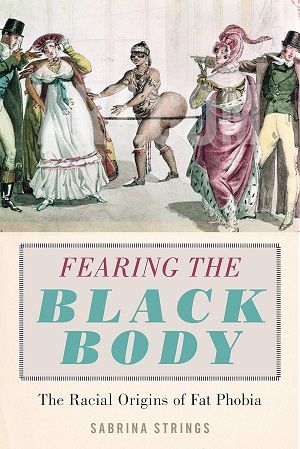
Fat Phobia’s Origins (Hint: It’s Racism)
Today’s pick is a piece of intense nonfiction that details the origins of anti-fatness and how is is rooted in white supremacy.

Fearing the Black Body: The Racial Origins of Fat Phobia by Sabrina Strings, Ph.D.
Though this book is almost five years old, I am not surprised that it is still deeply relevant to understanding the inherent racism in Western standards of beauty, especially around body size and shape. Sabrina Strings, Ph.D. is the North Hall Chair of Black Studies at the University of California, Santa Barbara, and had a dual postdoc appointment in both the Department of Sociology and the School of Public Health at the University of California, Berkeley.
This is not a light read. In fact, it is incredibly dense and very academic. It is a slow, thorough examination of historical artwork, historical texts, historical policies, advertisements, periodicals, and more that draws an undeniable link between the prevalent beauty ideal of being thin and racism. I’ve often wondered how Western society strayed so far from the desirably plump ideal of the Rubenesque woman. This book lays it all bare, and it is a deluge of answers to that question. Of course, you can’t talk about these things without also talking about white supremacy, eugenics, puritanism, and John Harvey Kellogg. The author goes deep into all of these subjects (and more), and repeatedly shows how it is all tied together. She not only writes about the origins of the slender ideals in art, but also clearly shows how the medical establishment hopped on the anti-fat train and got to where we are today.
When we talk about intersectional feminism and how we can make sure our feminism is worth a damn, we also have to talk about racism and homophobia and ableism, and multiple other intersections of identity. This means we must talk about anti-fatness when we are talking about racism and feminism. If you’re a reader who has been reading a lot of books on antiracism over the past few years, I highly recommend that you also read this book.
The author refers to a lot of artwork, and there are photos in the physical copy. I found myself stopping to Google image search everything I was hearing about on the audiobook. Many content warnings for racism and anti-fatness.
Want reading recs in your inbox? Sign up for our Read This Book newsletter!











